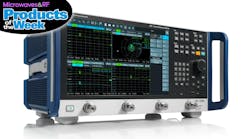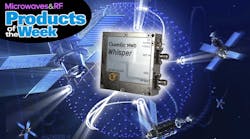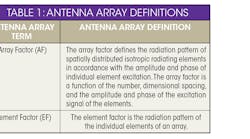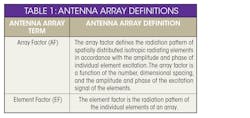Continuing the series on microstrip antennas, this article examines antenna arrays. Parts 1 and 2 focused on the single-element, rectangular microstrip antenna.
Microstrip Antenna Array
Although a significant number of applications exist for the single-element microstrip antenna, in many cases, the performance enhancements and features available with multiple microstrip-element arrays add to an expanding list of new opportunities. A microstrip antenna array is formed by the arrangement, or grouping, of multiple, single-element microstrip antennas. The respective geometric positioning of the individual elements, as well as the element amplitude and phase excitation, determines the characteristics of the antenna array.
Microstrip antenna arrays are typically designed to enhance antenna performance beyond that available from a single element. For example, arrays of single-element microstrip antennas offer increased gain and narrower beamwidth at the cost of larger aperture area. In addition, array antennas offer the ability to steer the principal radiation intensity beam via differential phase excitation and reduced sidelobe levels by variable power excitation to the individual elements of the array—properties that compel emphasis in many applications.










